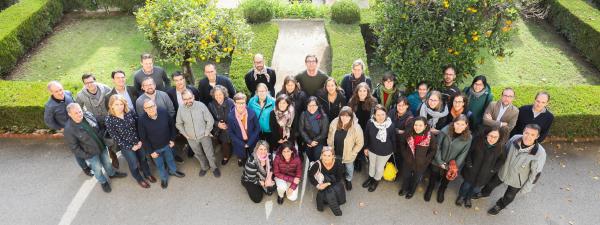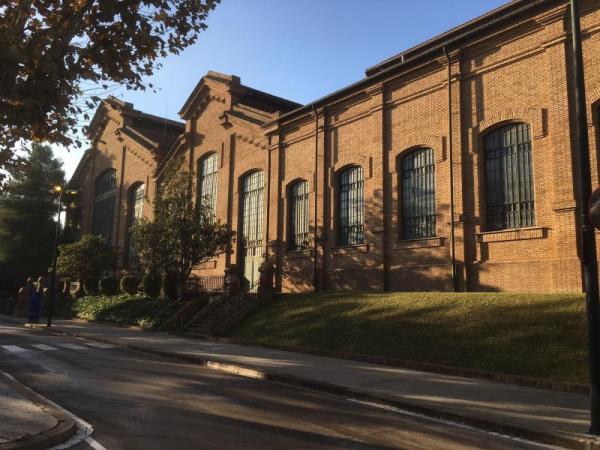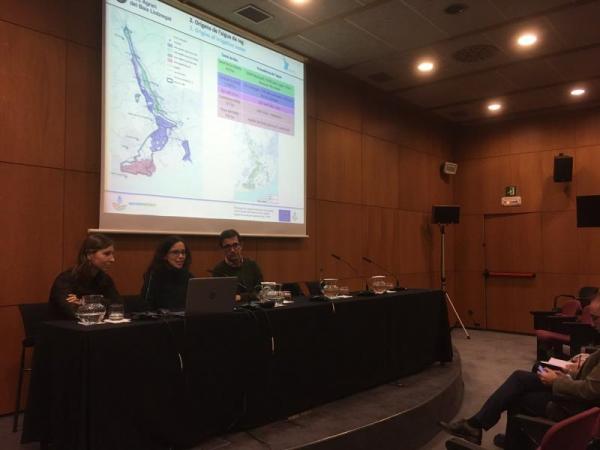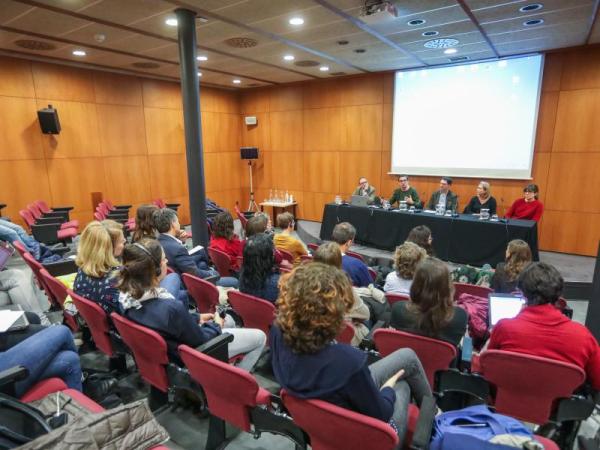At November 21st WaterProtect organised its Spanish Workshop at the historical water production site of the local water company Aigües de Barcelona. Experts and WaterProtect partners working in the Lower Llobregat Action Lab presented the local situation and challenges and the developed strategy to make the water supply and system more sustainable and resilient to climate change.
The participants to the workshop were welcomed by Antonio Martínez Flor, the Deputy Mayor for Territorial Policy and Space of Cornella de Llobregat, and by Jordi Martin, the Head of Water Quality Management at Barcelona’s Waters company Aigües de Barcelona.
Climate and land use change
Antoni Munné, Head of the Department of Water Quality and Control of the Catalan Water Agency described the current situation in Catalonia where the water demand is closing in on the total annual water availability, which makes the water system in the region vulnerable. This vulnerability is growing since ‘the average temperatures are rising and statistics show that the rainfall is decreasing 3% every decade. Furthermore, the flow of some rivers has dropped 7% due to the changing land use.’
Vinyet Solà, Responsible for Water Quality of CUADLL (the Water Users Community Organisation), and Anna Casanova, Technician of CPABLL (the Agrarian Park Consortium), both partners in WaterProtect, presented the water network in the Baix Llobregat Agrarian Park. This agrarian park (3,489.83 hectares) was created in 1998 with the will to preserve its economic, ecological and landscape heritage. It is one of the oldest and most fertile agricultural areas in Catalonia and it supplies the local (but also international) markets with fruit and vegetables.
Participatory monitoring and modelling
Miren López de Alda, Scientific Researcher at IDAEA-CSIC, presented the main results of the participatory monitoring carried out in the context of the project with regards to the main pesticides and the source (mainly urban) of the nitrates polluting the area.
Enric Queralt, Technical Director of CUADLL, stressed the importance of the developed monitoring system for groundwater and surface water quality for the farmers in the Lower Llobregat area. The new water database GISEL and the new numeric model will be capable of simulating the water quality and quantity in the area. ‘As of 2020 we will be able to simulate the effect of different measures on water contamination, the effect of use of reclaimed water, and also the impact of climate change on the water system.’
Water reuse
Jordi Martin from Aigües de Barcelona informed the workshop participants about the challenge to develop water reuse in the region. About 50% of the discharged waste water goes directly to the sea. This shows the potential that water reuse has.”
But water reuse remains very challenging since a wide range of parameters needs to be monitored to guarantee safe use. The qualitative requirements for reuse depend on type of use in the area: farmers, industry... they all have different imperatives. At the same time we still have to work on the acceptance and raise trust among the re-users.’ (see also ‘A Sanitation Safety Plan (SSP) for use of regenerated water in agriculture in the Baix Llobregat’)
Best management practices
This was followed by a presentation by Elena Isla from CPABLL on water protection best management practices that were promoted with farmers in the action lab. After that there was a presentation by Nicoleta Suciu of the Università Cattolica del Sacro Cuore in Italy showing the challenges and WaterProtect activities in Val Tidone, the Italian action lab. The workshop was closed with a round table and Q&A for all experts.
All presentations are available on www.cuadll.org
In the afternoon, the WaterProtect consortium visited the Baix Llobregat Agrarian Park and had the opportunity to see which are the main challenges concerning water management in the area as well as different types of farmers’ exploitations.





